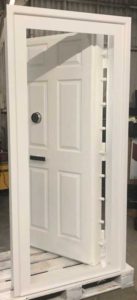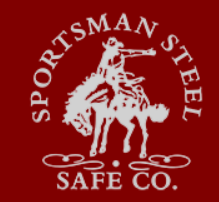Choosing the right gun safe is a crucial decision for firearm owners. It’s not just about protecting your valuables; it’s about safeguarding your family and ensuring peace of mind. However, the market offers a wide array of safes, each with varying features and price points. Making the wrong choice can leave you vulnerable to theft or compromise the safety you sought. This article highlights common pitfalls to avoid when purchasing a gun safe, ensuring you make an informed and secure investment.

**1. Neglecting Fire Resistance:**
Many gun owners prioritize theft prevention, often overlooking the crucial aspect of fire resistance. A fire can quickly render your entire investment – firearms, ammunition, and other valuables – useless. While a basic safe might deter casual thieves, a fire can quickly overcome even the most robust lock systems. Safes are rated based on their ability to withstand fire for a specific period. Look for safes with Underwriters Laboratories (UL) or similar certifications. These ratings indicate the safe’s fire resistance and the duration it can withstand high temperatures. Don’t be swayed by a low price if it comes at the cost of fire safety. A fire-resistant safe is an essential investment, particularly in areas prone to wildfires or other fire hazards.
**2. Underestimating the Importance of Security Features:**
While a robust lock is essential, a safe’s security extends beyond the locking mechanism. Consider these critical features:
* **Solid Construction:** A safe’s overall construction is crucial. Look for safes made from thick steel plates, reinforced corners, and welded seams. A flimsy safe is easily breached, even with a seemingly strong lock.
* **Lock Mechanism:** A high-quality lock, like a combination lock, keypad lock, or electronic lock, is vital. However, choose a lock known for its strength and resistance to picking or manipulation. Consider the lock’s complexity and the potential for bypass or manipulation. Don’t assume a more complex lock is automatically more secure. Research and reviews are key.
* **Reinforced Hinges and Latches:** These components play a significant role in preventing forced entry. Look for reinforcements and robust construction to withstand prying and leverage.
* **External Reinforcement:** Safes with external reinforcement plates or steel bars around the perimeter can significantly increase their resistance to forceful attacks, such as drilling or hammering.
**3. Ignoring the Safe’s Size and Capacity:**
Purchasing a safe that’s too small will quickly become frustrating as your collection grows. Conversely, a safe that’s too large will be unnecessarily expensive and potentially cumbersome to move or install. Thoroughly assess your needs, considering the number of firearms, ammunition, and other valuables you intend to store. Measure the space available for placement and account for future additions.
**4. Choosing a Safe Based Solely on Price:**
While price is a factor, it shouldn’t be the sole determinant. A significantly cheaper safe might lack the crucial security features needed to protect your investment. A lower price point often translates to lower quality materials, less robust construction, and potentially less reliable security mechanisms. Consider the long-term cost implications. A high-quality safe, though more expensive initially, will provide peace of mind and protection for years to come, potentially saving you from costly replacements or lost possessions.
**5. Neglecting Installation and Placement:**
A well-placed gun safe is half the battle. Proper installation is crucial to prevent unauthorized access. Consider these factors:
* **Secure Location:** Choose a location that’s difficult to access, preferably in a less visible area. Avoid placing it near easily accessible windows or doors. Consider using a concrete or reinforced floor for added stability.
* **Mounting:** Securely mount the safe to the floor or wall to prevent movement and shifting during forced entry attempts. Follow the manufacturer’s instructions carefully for proper installation.
* **Environmental Considerations:** Avoid placing the safe in areas with excessive moisture, extreme temperatures, or direct sunlight. These conditions can damage the safe’s internal components over time.
**6. Not Checking Reviews and Researching Brands:**
Before making a purchase, thoroughly research different brands and models. Online reviews from other gun owners can offer valuable insights into a safe’s performance, durability, and ease of use. Look for reputable brands with a history of producing high-quality safes. Comparing features, ratings, and customer feedback will help you make an informed decision.
**7. Overlooking Maintenance and Regular Checks:**
A gun safe, like any other security system, requires regular checks for proper functioning. Perform periodic inspections to ensure the lock mechanism, hinges, and other components are in good working order. Address any issues promptly to prevent potential vulnerabilities.
**Real-World Example:**
A homeowner purchased a relatively inexpensive gun safe, focusing solely on its price. The safe lacked reinforced construction and a robust locking mechanism. Within months, the safe was compromised, and the firearms were stolen. The homeowner learned a costly lesson about the importance of investing in a safe with adequate security features.
**Conclusion:**
Investing in a gun safe is a serious decision that requires careful consideration. Avoid the common mistakes outlined above to ensure you select a safe that effectively protects your firearms, ammunition, and other valuables. Prioritize fire resistance, robust construction, and reputable brands. A well-chosen gun safe is not just a storage solution; it’s a crucial component of your home security plan. By understanding the critical factors and avoiding these common pitfalls, you can safeguard your investment and maintain peace of mind.
